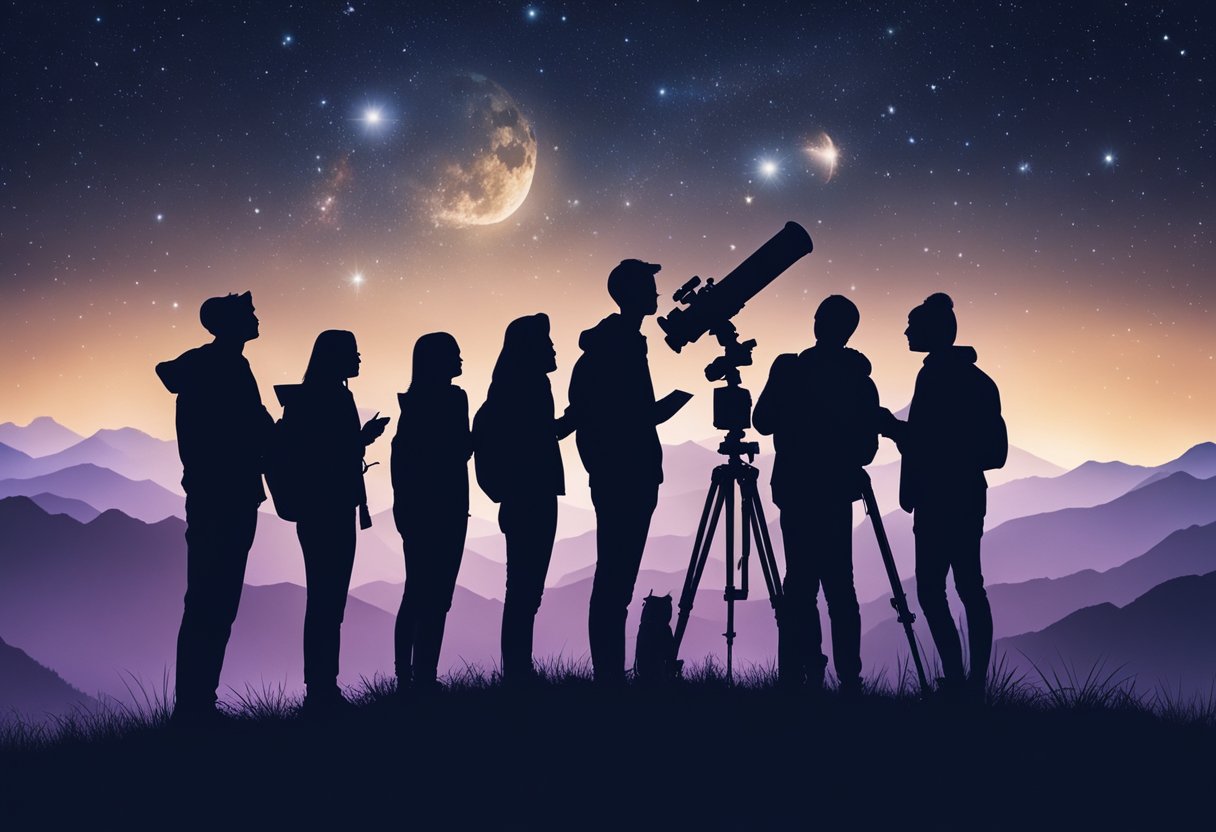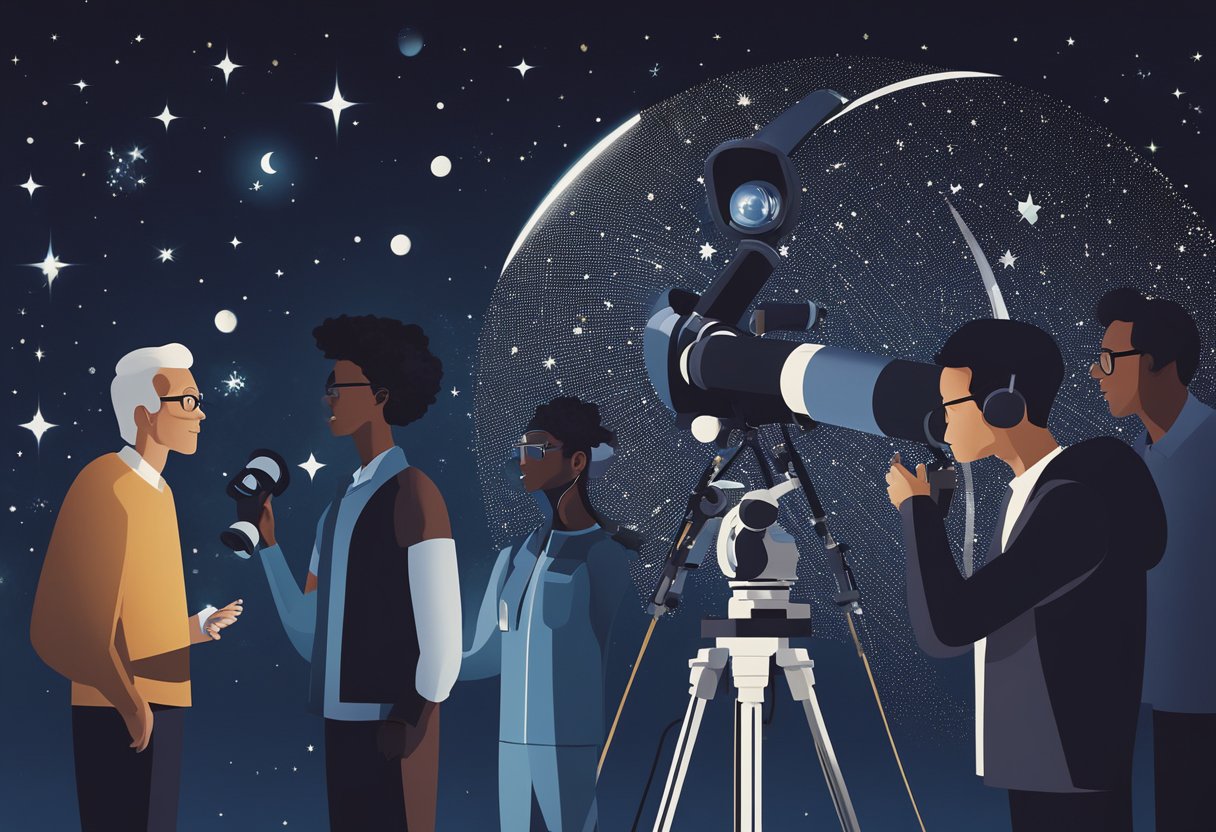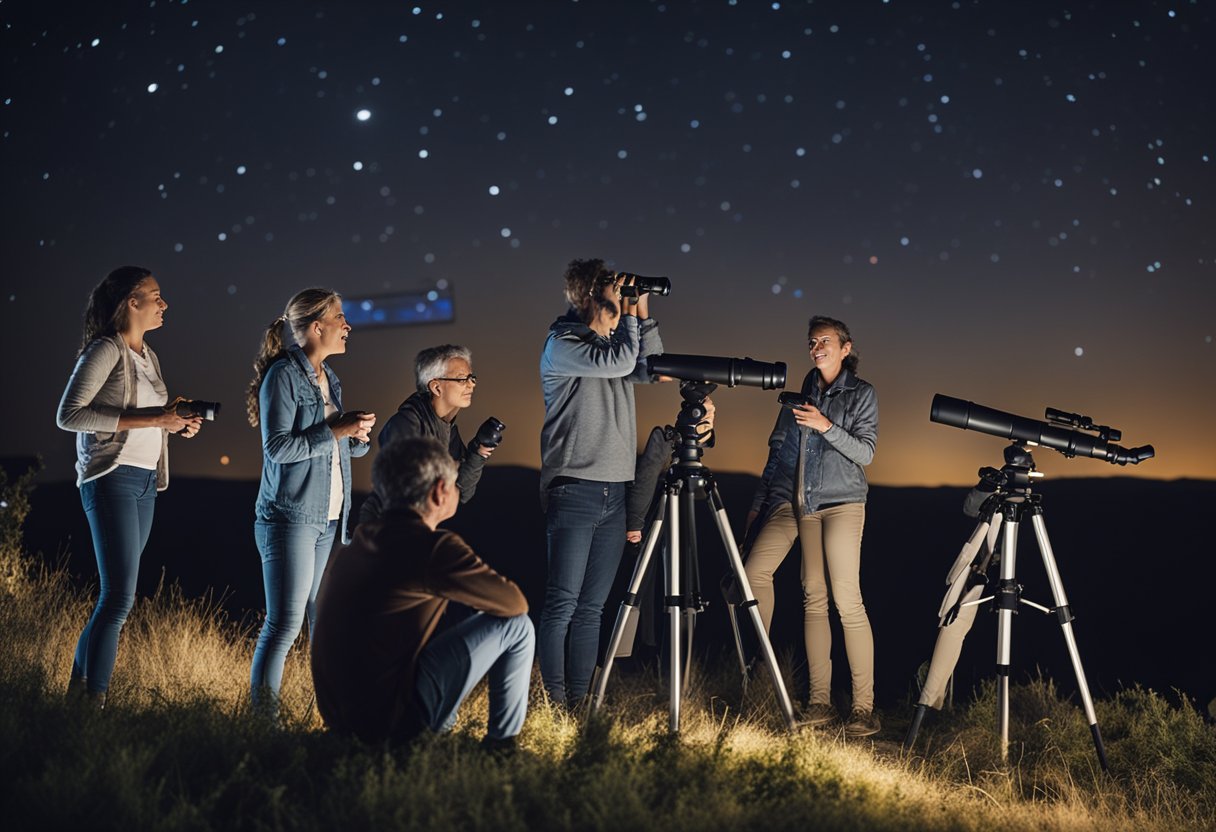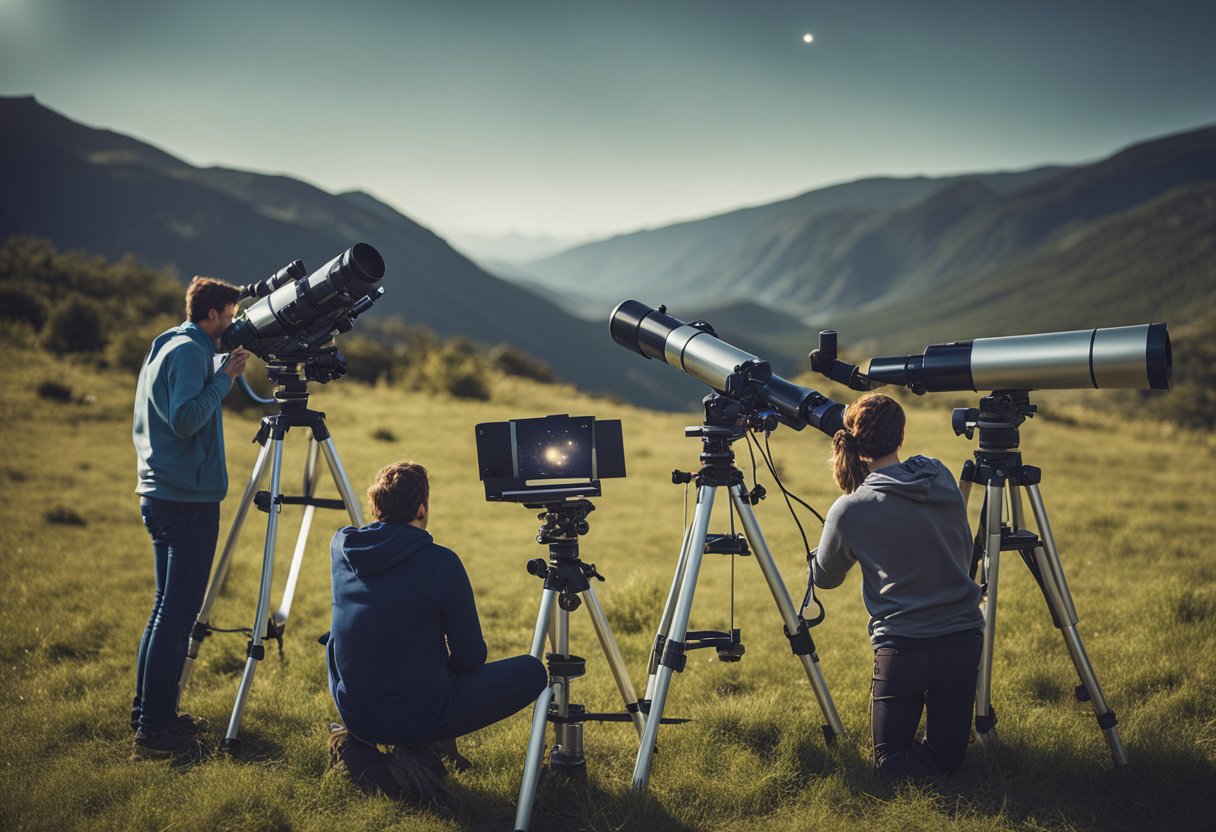
Citizen science projects in astronomy offer a unique opportunity for individuals around the globe to contribute to cutting-edge scientific research. By participating in these projects, volunteers—known as citizen astronomers—take on an active role in various aspects of astronomical research, from classifying distant galaxies to tracking the passage of asteroids. Through their contributions to the gathering and analysis of data, they become a powerful force driving scientific progress and discovery.

These collaborative efforts pair amateur astronomers with professional scientists, addressing a wide range of questions about the universe. The dramatic increase in accessible technology and internet connectivity has fuelled the growth and impact of citizen science. Projects led by organisations such as NASA have showcased the value of public participation in science. Moreover, historical findings credited to amateur astronomers highlight how significant their role has been throughout the history of space exploration.
Citizen science in astronomy not only makes meaningful research contributions but also educates and excites participants about the cosmos. Tools and technologies such as online platforms and mobile applications make science more accessible, while challenging volunteers to develop new skills. Crucially, as astronomy relies heavily on the observation and classification of large datasets—often requiring human insight—citizen scientists provide a crucial resource while fostering an inclusive, enthusiastic community interested in the mysteries of the universe.
Citizen science represents a form of collaboration where members of the public engage in scientific work. We often describe this collective effort as one in which volunteers—individuals not formally trained as scientists—assist in research by collecting data, analysing results, or contributing to problem-solving. It is a domain open to everyone with an interest in advancing knowledge and contributing to authentic scientific enquiries.
Typically, citizen science projects capitalise on the collective power of participants to scrutinise massive datasets—tasks that would be overwhelming for individual researchers or small teams. Our modern digital landscape has made it substantially easier for people across the globe to participate.
In astronomy, these non-professional enthusiasts might:
The initiative doesn’t require any specific academic background; passion and the will to contribute are the primary requisites. Moreover, the rise of internet connectivity implies that helping with a project can be as simple as logging onto a dedicated website to analyse images or data.
The contributions of citizen scientists can be substantial and have led to legitimate scientific breakthroughs. Besides the innate satisfaction of contributing to science, these volunteers sometimes gain recognition through co-authorship in scientific papers, demonstrating the valuable role they play in the scientific community.
Our commitment to inclusivity ensures that barriers to entry are lowered, making these projects attractive to a diverse range of people. Projects like those hosted on NASA’s citizen science website are excellent examples of initiatives harnessing public enthusiasm for space exploration and research.
In essence, citizen science strengthens the bridge between professional scientists and the broader public, fostering a collaborative environment ripe for discovery and innovation.

Citizen science has a storied legacy in augmenting professional astronomical research. The collective efforts of amateur astronomers have been instrumental in many significant discoveries and continue to be vital in many of NASA’s projects today. In the rich history of astronomy, enthusiastic volunteers, often without formal training, have contributed to groundbreaking work, fostering a collaborative spirit that propels the field forward.
From the earliest records of star cataloguing to the tracking of comets, lay astronomers have played a crucial role. This collaboration has been bolstered in the modern era by the advent of digital technologies, allowing NASA and other organisations to harness the power of citizen scientists across the globe.
The advent of the internet has seen a surge in contributions from citizen scientists. Our understanding of the cosmos has been enriched significantly by the observations and discoveries made by these individuals. Notably, NASA’s citizen science projects involve the public in research, co-creating knowledge.
One notable example is the International Astronomical Search Collaboration, where citizen scientists have uncovered thousands of new asteroids. It demonstrates our combined potential when professional scientists and passionate amateurs collaborate.
Our efforts have not only forged past discoveries but are actively shaping the present and future of space exploration. As we look to the skies, we carry the legacy of citizen science in astronomy with us, ensuring that the journey of discovery remains a joint venture between us – the scientists and the community at large.
Citizen science projects in astronomy enable us to actively participate in scientific inquiry and discovery. They often leverage the collective efforts of volunteers to analyse vast amounts of data that would be overwhelming for individual research teams.
Zooniverse is considered the largest and most popular platform for citizen science projects, with a specific emphasis on astronomy. Participants have the opportunity to assist in the classification of galaxies in Galaxy Zoo, an endeavour that has led to numerous significant discoveries due to the efforts of citizen scientists.
With Planet Hunters, volunteers sift through data from NASA’s Kepler space telescope in the search for potential exoplanets. This project has proven immensely successful, with participants credited with discovering new worlds beyond our solar system.
Globe at Night is an international scientific campaign to raise public awareness of the impact of light pollution. It encourages citizen scientists to measure night sky brightness and contribute to a global dataset, thus playing a vital role in addressing a growing environmental concern.
Tomatosphere utilises the unique setting of space to teach students about science and agriculture. By investigating the growth of tomatoes from seeds that have been to space, we gain insights that reach far beyond traditional boundaries, engaging the next generation in the progress of space exploration and botany.

In the realm of citizen science projects within astronomy, the contributions are incredibly varied in nature. We recognise a few key tools and technologies that enthusiasts frequently use to aid in their astronomical explorations and scientific contributions.
When it comes to telescopes, we can’t overstate their importance. Enthusiasts often utilise a range of optical telescopes, from simple refractors to complex reflectors, equipped with digital technologies for remote sensing and celestial observation. Some individuals prefer building their custom setups, integrating advanced sensors and filters to enhance data quality.
Mounts and tracking systems have become more sophisticated, with computer-assisted designs that follow celestial objects reliably across the sky, vital for long-exposure astrophotography and detailed observations.
The rise of smartphone applications has transformed how we engage with the night sky. With features that range from star charts to satellite trackers, these apps turn a smartphone into a powerful tool for astronomy. They make use of the phone’s built-in sensors to help locate objects in the sky and often include augmented reality to overlay information on the live camera feed.
Two common categories of apps include:
Citizen scientists often collaborate through online platforms and databases. Websites like NASA’s citizen science projects facilitate participation in ongoing research, allowing for contributions such as data analysis and discovery submission from the comfort of a computer.
Moreover, these platforms often offer tutorials and educational resources to help novices become seasoned observers, making the most of their telescopes and technology.
Citizen astronomers play a pivotal role in enhancing our understanding of the cosmos. As volunteers, they contribute to the collection and analysis of data which is invaluable for scientific discoveries. Utilising tools provided by professional astronomers, they sift through large volumes of images and other data, helping to identify new celestial phenomena and contributing to ongoing research projects.
Key Contributions of Citizen Astronomers:
Structured Capacity:
Citizen astronomers are not only instrumental in amassing a vast repository of knowledge but also serve as a bridge between complex scientific research and public understanding. Through platforms like NASA’s citizen science projects, they have even been credited as co-authors in scholarly articles, reflecting their substantial contributions to space science research.
In summary, their participation constitutes a significant adjunct to our exploration of the stars and beyond.
In the realm of astronomy, citizen science projects have paved the way for remarkable scientific achievements. Our collective efforts have significantly boosted research, leading to valuable scientific contributions in various forms.
Researchers and citizen scientists collaborating on projects have produced a multitude of scientific publications. These collaborations have seen over 410 citizen scientists from NASA’s projects named as co-authors on refereed publications, underscoring the impact of public participation on formal research. For instance, contributions to projects listed on NASA Science’s Citizen Science portal have extended our understanding of the cosmos.
Volunteers play a critical role in sorting through vast astronomical data sets, identifying and classifying celestial features. Their data analysis efforts have supported scientists in interpreting the complex information gathered by telescopes and space missions. Programmes like those found on Zooniverse allow users to sift through real astronomical data, making it possible for even novices to assist in cutting-edge science.
The backbone of any scientific research is the development of robust theories. Citizen scientists have been instrumental in exploring models informed by astronomical data sets. By engaging with these models and initiating new scientific queries, these volunteers have fueled theoretical developments within the astronomical community, as cited in publications such as the Annual Review of Astronomy and Astrophysics.

Engaging in citizen science projects within astronomy has demonstrated significant benefits for students and education systems alike. By participating in real-world science experiments, students cultivate a deeper understanding of space science and earth science. They gain practical experience in scientific methods and data analysis, enhancing their learning journey.
Educational institutions are taking note of these positive outcomes and are increasingly incorporating citizen science into their programmes. This approach enhances both learning and attitudes towards science, equipping students with the tools to excel academically and potentially inspiring future careers in space science.

When engaging in citizen science projects in astronomy, we encounter a variety of challenges and limitations that must be thoughtfully considered.
| Factors | Issues |
|---|---|
| Training | Need for standardised protocols to ensure data accuracy |
| Equipment | Limited access to advanced observational tools |
| Retention | Maintaining sustained interest and participation |
We must strive to enhance the infrastructure supporting citizen scientists and educate participants to mitigate these issues. Creating opportunities for learning and providing access to better equipment can improve both scope and data integrity. Tackling light pollution requires our collective effort in advocacy and education, aiming to implement policies that minimise its impact.
In the burgeoning field of citizen science, we are observing a significant evolution, particularly within astronomy. As the fabric of the cosmos continues to unravel before us, innovations in technology and collaborative platforms are empowering us to contribute more substantially to the understanding of the universe.
Citizen science in astronomy is trending towards greater inclusivity, as projects are designed to be accessible to people regardless of their scientific background. In the future, we anticipate these projects to incorporate advanced tools such as machine learning algorithms that can help amateur astronomers analyse vast amounts of data more efficiently.
The integration of virtual reality (VR) and augmented reality (AR) technologies is expected to bring a transformative experience to citizen scientists. These tools will allow us to visualise celestial objects in 3D, enhancing our capabilities to make new discoveries.
Moreover, collaborations between citizen science platforms and emerging ventures, like SpaceVoyageVentures.com, spotlight the intersection of space research and tourism. These partnerships aim to foster a community keen on both exploring and preserving the night sky.
We are standing on the cusp of a new era in astronomy where the lines between professional scientists and the public are becoming increasingly blurred. With every contribution, whether it is identifying new celestial bodies or validating data, we are collectively pushing the boundaries of what is known about our universe.

In the realm of astronomy, we often witness the power of community and collaboration. These two pillars are foundational in citizen science projects, which bridge the gap between professionals in the scientific community and enthusiastic amateurs across the world. The synergy not only enriches the research but also fosters a sense of unity and collective purpose.
Community Engagement: We actively engage with a global community, encouraging people of all skill levels to contribute to astronomical discoveries. Our community thrives on the mutual exchange of knowledge and shared passion for the cosmos.
Collaborative Efforts: Through collaboration, we combine diverse perspectives and methodologies. This inclusive approach has led to significant contributions from citizen scientists in projects like the International Astronomical Search Collaboration, which engages about 55,000 participants in asteroid discoveries each year.
Global Participation: Our projects do not recognise borders; instead, they draw in volunteers worldwide. By working together, we are expanding our horizons and reinforcing global cooperation in science.
Scientific Community Support: Professional astronomers and institutions provide crucial support, making complex astronomical data accessible and understandable. An example is the NASA’s citizen science initiatives, where volunteers have contributed to thousands of discoveries and even co-authored scientific papers.
Citizen science within astronomy exemplifies how common interests transcend individual backgrounds, uniting us on a quest for knowledge and exploration. From the involvement in backyard observations to the collaborative search for planets, our collective efforts shine as brightly as the stars we study. Collaboration in this field doesn’t just expand the scientific community; it enriches our understanding of the universe, binding us together under the vast, starlit sky.
The landscape of astronomy has been profoundly enriched by contributions from citizen scientists. Our collective efforts have led to significant findings that enhance our understanding of the cosmos.
Exoplanets: In 2017, participants in citizen science projects made a remarkable discovery using data from NASA’s Kepler space telescope, uncovering a system of at least five exoplanets. This achievement not only demonstrates the capabilities of volunteer scientists but also stresses the importance of public engagement in science. The Kepler mission has fundamentally changed our view of the sky, revealing that exoplanets are common in the Milky Way.
Brown Dwarfs: The Backyard Worlds: Planet 9 project mobilises amateur astronomers to sift through data from space telescopes. Their contributions have led to the discovery of numerous brown dwarfs, celestial objects that are neither fully fledged stars nor planets. These findings provide invaluable insights into stellar formation and the structure of our galaxy.
Milky Way Mapping: Citizen science initiatives have also enabled regular individuals to contribute to the mapping of our Milky Way. Projects like Zooniverse allow users to classify galaxy shapes, identify stellar clusters, and trace the spiral arms of our galaxy. These collective efforts have nuanced our galactic understanding.
Below are highlighted achievements conveyed through citizen science projects:
| Year | Discovery |
|---|---|
| 2017 | At least five exoplanets discovered using Kepler data |
| 2019 | Brown dwarfs identified in Backyard Worlds: Planet 9 data |
These triumphs stand as a testament to the power of collaborative science, wherein researchers and enthusiasts alike turn their gaze upwards to unravel the mysteries of the universe. We are at the threshold of a new era where the Hubble Space Telescope and its successor missions continue to benefit from the contributions of citizen scientists worldwide.

In this section, we cover the essential details one must know to engage with citizen science initiatives in astronomy, including ways to get involved, the use of mobile applications, exemplary projects that can be accessed from home, NASA’s Earth-focused projects, the creation of new projects, and the utilisation of personal telescopes.
One can start participating in citizen science projects by finding opportunities on platforms like NASA’s Citizen Science portal or the International Astronomical Union website, that list various astronomy research initiatives seeking public contributions.
Mobile applications significantly lower the barrier to entry for the public to contribute to citizen science efforts. They provide user-friendly interfaces for volunteer scientists to participate in projects such as those listed on Sky & Telescope, enabling data collection and analysis through smartphones.
Yes, one can contribute to the ‘Galaxy Zoo: Hubble’ from Galaxy Zoo right from home. This project allows volunteers to classify galaxies according to their shapes and contributes to our understanding of galaxy formation.
NASA involves the public in Earth science through projects listed in their Citizen Science Opportunities. Volunteers can contribute to ongoing research by analysing satellite images, monitoring changes in Earth’s climate, and more.
Creating a citizen science project involves identifying a research question that can benefit from public engagement, securing funding, using a platform to reach volunteers, and establishing a system for data collection and analysis. One might also consider the logistical aspects, such as training volunteers and ensuring data quality.
Individuals with personal telescopes can contribute to citizen science by reporting observations of celestial events, such as supernovae or comets, to relevant bodies. Training and guidelines on data quality are provided by many projects to ensure valuable contributions.